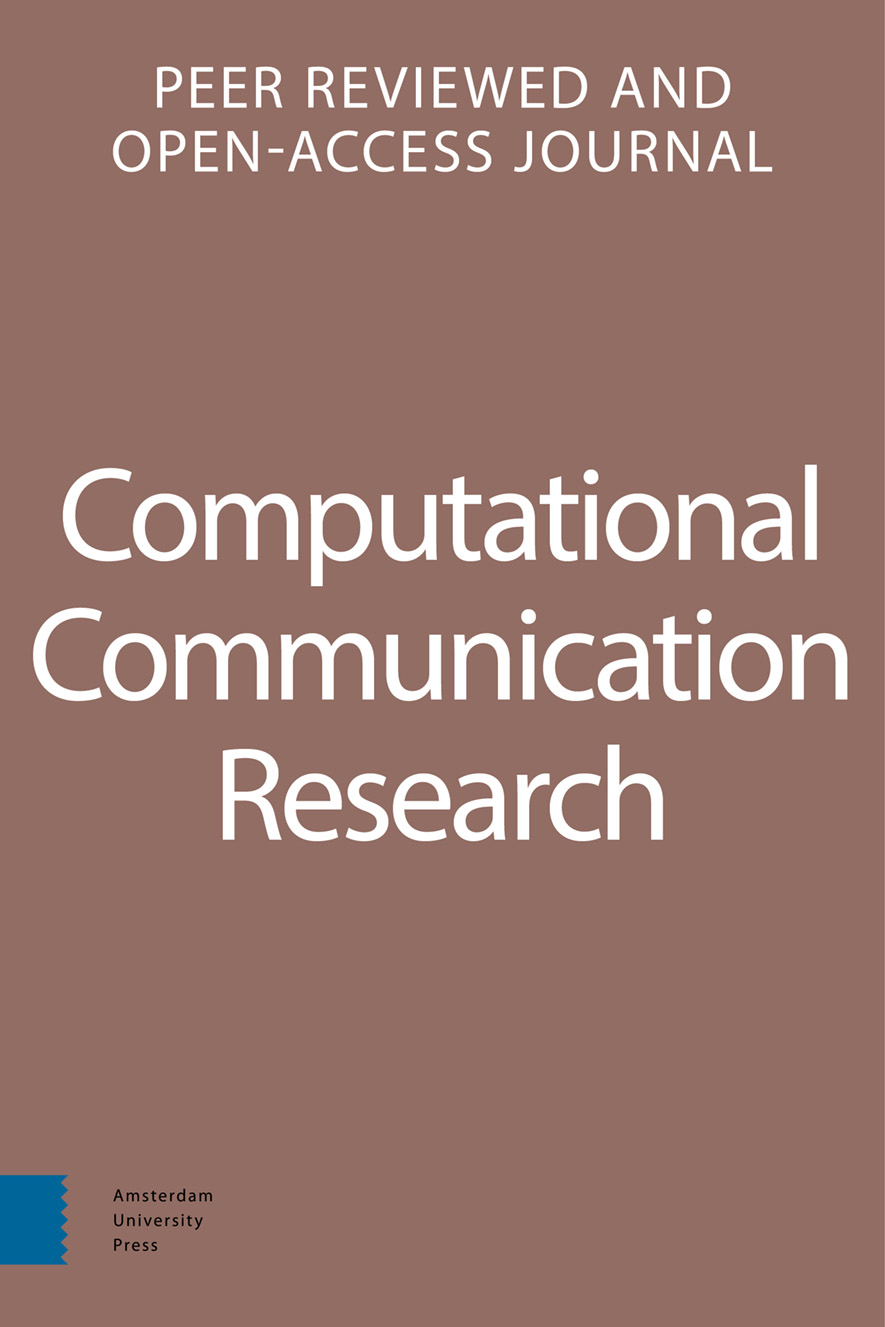- Home
- A-Z Publicaties
- Computational Communication Research
- Huidige nummer
Computational Communication Research - Current Issue
Volume 7, Issue 1, 2025
-
-
Boosting Transformers: Recognizing Textual Entailment for Classification of Vaccine News Coverage
Meer MinderAuteurs: Luiz Neves, Chico Camargo & Luisa MassaraniThe introduction of Transformers, neural networks employing self-attention mechanisms, revolutionized Natural Language Processing, handling long-range dependencies and capturing context effectively. Models like BERT and GPT, trained on massive text data, are at the forefront of Large Language Models and have found widespread use in text classification. Despite their benchmark performance, real-world applications p Read More
-
-
-
Candidate Party, Gender, and the Face Mask as a Political Symbol in Campaign Advertisements
Meer MinderAuteurs: Jielu Yao, Travis Ridout, Markus Neumann & Erika Franklin FowlerDuring the COVID-19 pandemic, wearing a face mask became politicized in the United States, with politicians and reporters employing competing public safety and civil liberties frames in discussions of masking. In this research, we argue that political candidates’ decisions to speak about and depict mask-wearing in their political advertising were strategic, depending on both the candidate’s party and gender. We examine politi Read More
-
-
-
AMMICO, an AI-based Media and Misinformation Content Analysis Tool
Meer Minderammico (AI-based Media and Misinformation Content Analysis Tool) is a publicly available software package written in Python 3, whose purpose is the simultaneous evaluation of the text and graphical content of image files. After describing the software features, we provide an assessment of its performance using a multi-country, multi-language data set containing COVID-19 social media disinformation posts. We conclude by Read More
-
-
-
Supply and Demand on Alt-Tech Social Media: A Case Study of BitChute
Meer MinderAuteurs: Benjamin D. Horne, Myles Bowman, Milo Z. Trujillo, Mauricio Gruppi & Cody BuntainAs media platforms continue to develop content moderation policies, alternative platforms have emerged as safe havens for deplatformed content. As these alternatives to major media platforms grow, the importance of understanding their role in the media ecosystem grows too. In this paper, we perform a longitudinal study of the content dynamics of one such alternative media platform, BitChute. BitChute is an alternative vid Read More
-
-
-
Machine Translation for Accessible Multi-Language Text Analysis
Meer MinderAuteurs: Edward Chew, Mahasweta Chakraborti, William Weisman & Seth FreyEnglish is the international standard of social research, but scholars are increasingly conscious of their responsibility to meet the need for scholarly insight into communication processes globally. This tension is as true in computational methods as in any other area, with revolutionary advances in the tools for English language texts leaving most other languages far behind. In this paper, we aim to leverage those very advances to d Read More
-
-
-
Fact-checks as Data Source? Content Analysis of Fact-checking Articles in Germany between 2019 and 2023
Meer MinderDoor Sami NennoMisinformation has to be uncovered before it can be used for research purposes. This is a resource intensive process, which is why fact-checks have been a popular data source. They have been used directly as proxy for misinformation and indirectly to identify its sources and analyze its content and spread. However, there is little research on the limitations of fact-checks as a data source. Are there patterns in their topics Read More
-
-
-
CooRTweet: A Generalized R Software for Coordinated Network Detection
Meer MinderAuteurs: Nicola Righetti & Paul BalluffThis paper introduces CooRTweet, an innovative R package designed for detecting and analyzing coordinated behavior. CooRTweet’s distinctiveness lies in its essential architecture, derived from a minimal definition of coordinated behavior that captures its core elements in an abstract way. This approach makes it possible for the tool to be applied to the widest range of cases, from mono-modal network analysis on a single social Read More
-
-
-
Extracting Meaningful Measures of Smartphone Usage from Android Event Log Data: A Methodological Primer
Meer MinderAuteurs: Douglas Parry & Roland TothAs smartphones become increasingly integral to daily life, their importance for understanding human behavior will only continue to grow. Recognizing the potential of objective data on smartphone usage and the challenges associated with raw Android event log data, this paper provides a foundational guide for extracting meaningful measures of smartphone usage from such data. We describe the characteristic Read More
-
Most Read This Month Most Read RSS feed
Article
content/journals/26659085
Journal
10
5
false
nl

Most Cited Most Cited RSS feed
-
-
Computational observation
Auteurs: Mario Haim & Angela Nienierza
-
- More Less

